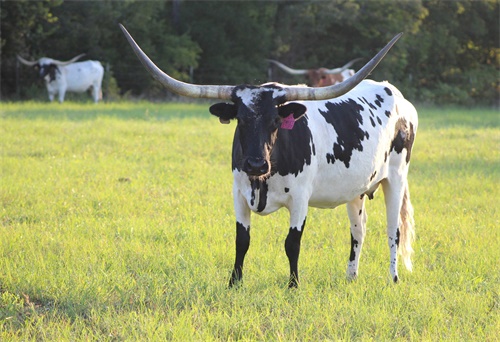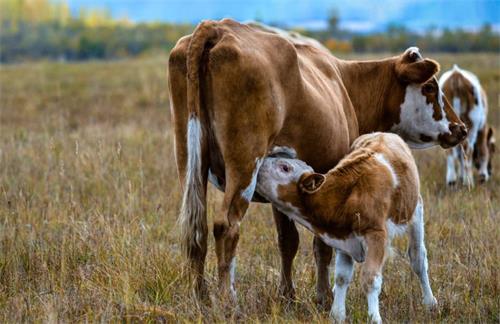Yes, veterinary ultrasound scanners can be used to examine a wide variety of animals. As a livestock farmer, I’ve personally witnessed how versatile and powerful ultrasound technology is in supporting animal health and productivity. Whether it’s routine pregnancy checks in sows or diagnosing lameness in cattle, ultrasound has become a vital tool on my farm. In this article, I’ll walk you through what kinds of animals can be scanned using veterinary ultrasound, what conditions it helps detect, and how it benefits different species—from pigs to horses to dogs and more.
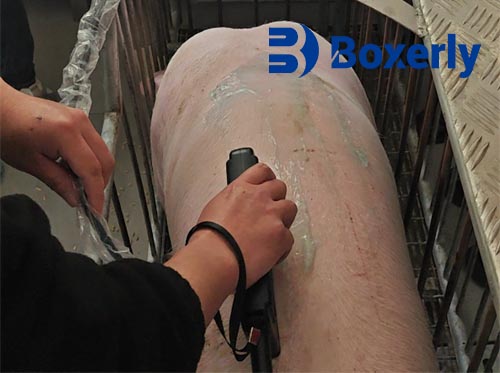
Introduction to Veterinary Ultrasound
Ultrasound imaging—also known as ultrasonography—is one of the most frequently used imaging methods in veterinary medicine. It uses high-frequency sound waves (typically between 1.5 and 18 megahertz) to generate real-time images of internal body structures based on the reflection of sound waves from different tissues.
The most common imaging format is B-mode (brightness mode), which produces grayscale images. The transducer, or probe, emits a short pulse of sound that travels through the body and reflects off tissues of differing densities. These echoes return to the probe and are converted into images that represent a cross-sectional view of the animal’s anatomy.
Veterinary ultrasound is especially valuable for examining soft tissue structures like muscles, tendons, ligaments, organs, and even blood flow using Doppler technology. It's painless, non-invasive, and offers real-time diagnostic insight.
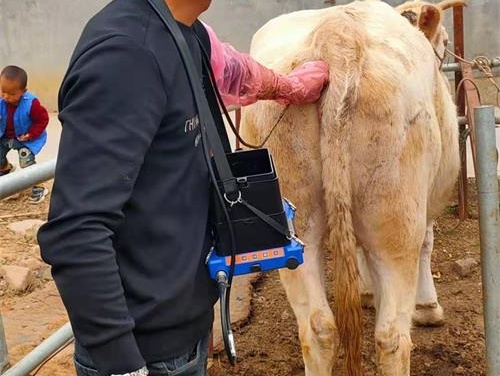
Large Animals: Cattle, Horses, and Pigs
Cattle
As a farmer raising cattle, ultrasound is indispensable during breeding season. It’s most often used for early pregnancy detection, fetal age estimation, and reproductive tract evaluation. Transrectal ultrasound is the standard method for reproductive exams in cows, providing accurate and quick insights into uterine health and ovarian status. Beyond reproduction, ultrasound also helps detect internal injuries, abscesses, and even lameness causes.
Horses
In equine medicine, ultrasound plays a critical role, especially in diagnosing tendon and ligament injuries in performance horses. These injuries are best visualized using high-frequency linear transducers, which produce detailed images of the soft tissues. Reproductive exams via transrectal ultrasound are also common in mares. Additionally, ultrasound assists in joint assessments, chest cavity evaluations, and guiding joint injections.
Pigs
In pig farming, ultrasound is mainly used for reproductive purposes. I routinely use it to confirm pregnancies in sows. It's fast and efficient, usually done abdominally without needing sedation. Some systems also allow backfat thickness measurement, helping us optimize nutrition and breeding strategies. In modern operations, ultrasound is also being explored for early detection of musculoskeletal and organ-related issues in breeding boars and sows.
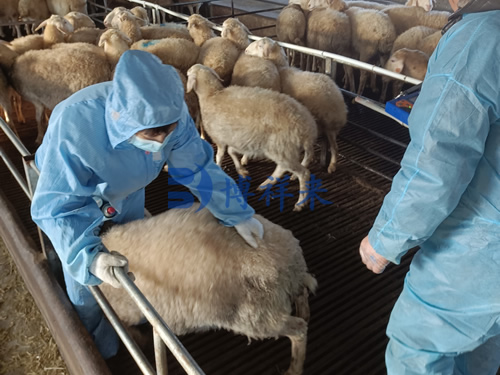
Small Ruminants: Sheep and Goats
Sheep and goats, like cattle and pigs, benefit greatly from ultrasound technology, especially in herd reproductive management. Transabdominal scans are used for early pregnancy checks, usually starting around day 30 post-breeding. These evaluations help us make timely decisions on feed allocation, separating open from pregnant animals to maximize efficiency.
In goats, it’s also common to monitor reproductive organs and detect abnormalities in kids, such as developmental anomalies. In sheep, farmers often use ultrasound to count the number of fetuses, which is crucial for nutritional planning.
Companion Animals: Dogs and Cats
Though I specialize in farm animals, I’ve worked with local veterinarians who treat dogs and cats using ultrasound. For small animals, ultrasound is a primary diagnostic tool for abdominal organs like the liver, spleen, kidneys, bladder, and gastrointestinal tract. It's also widely used for heart examinations (echocardiography) to diagnose conditions like valve disease or cardiomyopathy.
In female dogs and cats, ultrasound helps determine pregnancy and fetal viability, while in male animals, it’s useful for evaluating testicular health or diagnosing prostate issues.
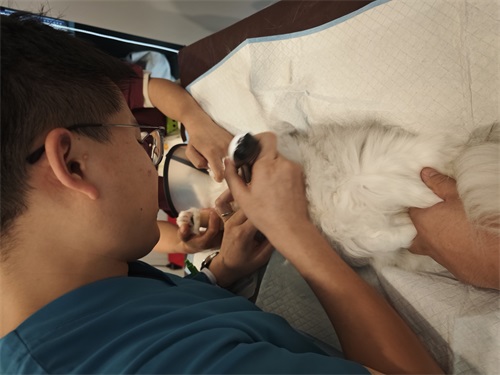
Birds, Reptiles, and Exotic Animals
Veterinary ultrasound isn't just limited to traditional farm or pet animals. Specialists often use portable high-frequency ultrasound scanners to examine exotic species such as parrots, snakes, lizards, and rabbits. These animals can have organ diseases or reproductive issues that are challenging to detect without imaging.
In reptiles, for instance, ultrasound can detect egg retention or abnormal fluid accumulation. In birds, it's used to check internal organs like the liver and kidneys, especially when blood tests are inconclusive.
How Ultrasound Helps in Diagnosis and Treatment
Veterinary ultrasound helps identify changes in organ size, structure, and tissue composition. It also detects abnormal fluid collections, tumors, cysts, abscesses, and pregnancy status. Changes in echogenicity (brightness on the screen) often point to inflammation, degeneration, or neoplasia.
In musculoskeletal scans, ultrasound detects tears, strains, and inflammation in tendons and muscles. It also visualizes joint effusion and cartilage damage—information that’s often missed on X-rays.
With Doppler ultrasonography, veterinarians can assess blood flow in vessels, check for obstructions, or evaluate heart valve function. This is crucial in diagnosing heart conditions and planning treatments.
Ultrasound-Guided Procedures
Another advantage of ultrasound is its use in guiding procedures like biopsies and fluid aspirations. On my farm, we once had a valuable heifer with a liver lesion. The vet used ultrasound to guide a biopsy needle precisely into the lesion, helping us get a diagnosis without invasive surgery. These techniques save time, reduce animal stress, and often eliminate the need for general anesthesia.
Limitations and Considerations
While ultrasound is versatile, it does have limitations. Gas-filled organs like the lungs and intestines can interfere with imaging. Bone also reflects sound waves completely, making it difficult to see beyond it. Additionally, very large or obese animals can reduce image quality due to the depth of penetration required.
However, advancements in technology, such as low-frequency probes and 3D imaging, continue to improve scan quality and broaden the range of species and conditions that can be assessed.
Conclusion
Veterinary ultrasound is a powerful and adaptable tool for examining a wide range of animals—from livestock like cattle, pigs, and sheep to companion animals and even exotic species. As a farmer, I rely on it to manage reproduction, monitor health, and make informed decisions that improve both animal welfare and farm productivity.
Its ability to deliver real-time, non-invasive imaging makes it an essential part of modern veterinary practice. Whether you're a farmer, breeder, or pet owner, understanding how ultrasound works and what animals it can benefit is crucial for better animal care.
References
Penn Veterinary Medicine: https://www.vet.upenn.edu
Merck Veterinary Manual – Ultrasonography: https://www.merckvetmanual.com
Veterinary Clinics of North America: Large Animal Practice
American Association of Bovine Practitioners
link: https://www.bxlimage.com/nw/1203.html
tags:

